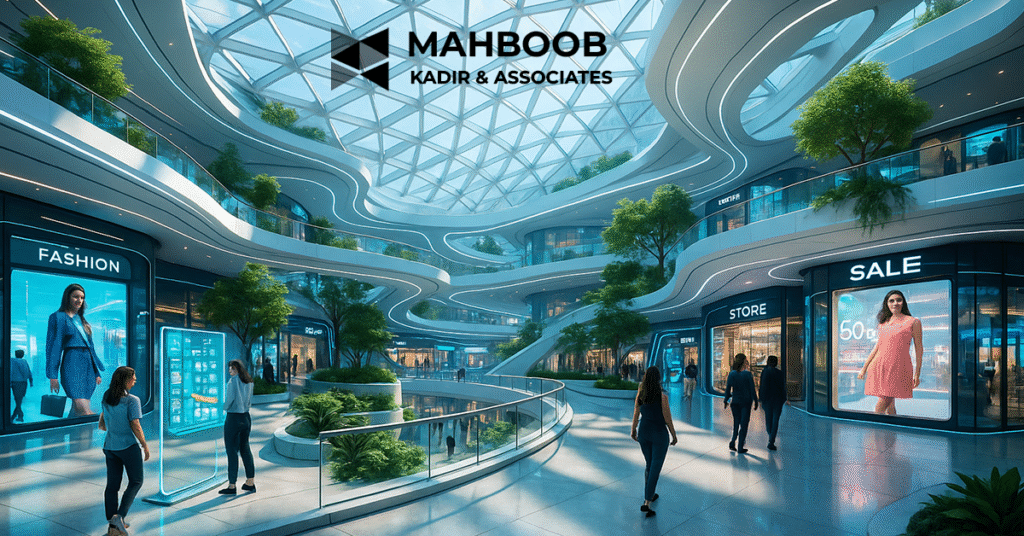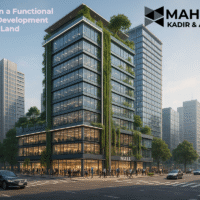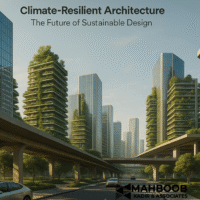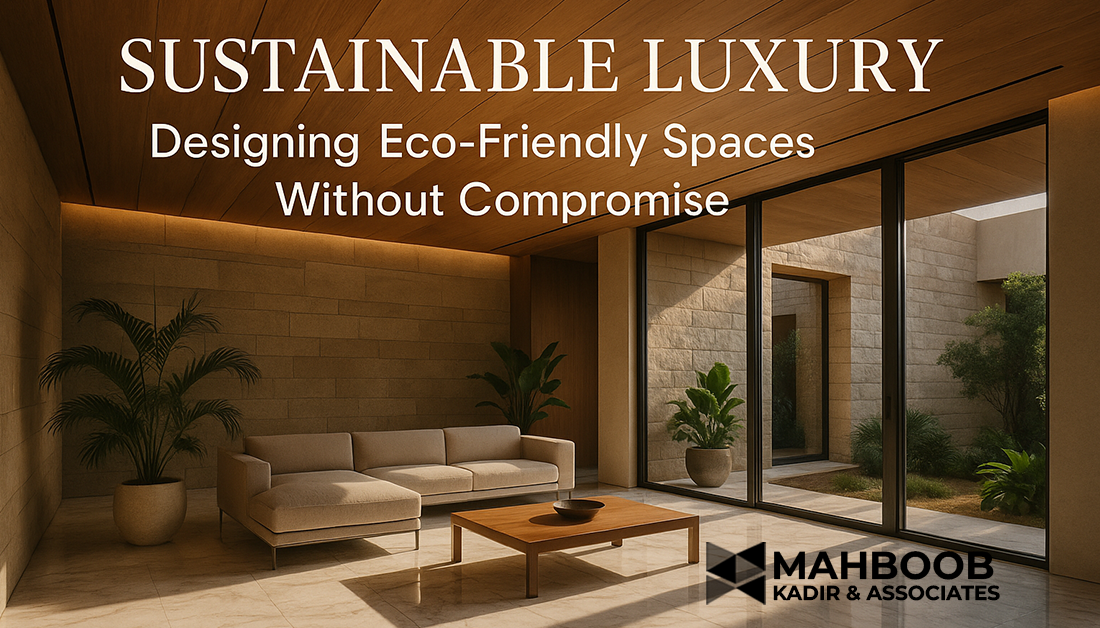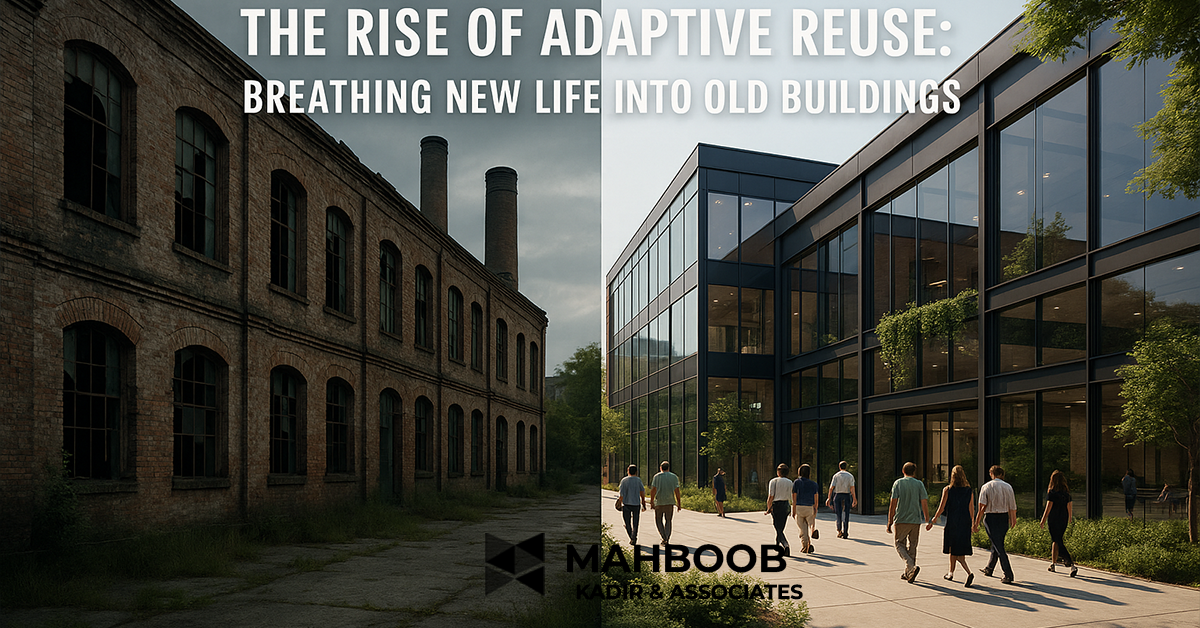The Future of Commercial Spaces: Shopping Malls and Mixed-Use Buildings
Introduction: The Changing Face of Commercial Real Estate
The future of commercial spaces is undergoing a remarkable transformation. Once defined by traditional shopping malls and isolated office towers, today’s cities are embracing mixed-use buildings that merge retail, workspaces, hospitality, and community zones into one cohesive design.
This shift is not just a passing trend — it reflects a deeper evolution in commercial real estate development, where architecture is driven by sustainability, technology, and human experience. In 2025 and beyond, shopping malls architecture and multi-use developments will become cornerstones of urban planning.
Why Shopping Malls Still Matter in 2025
Despite predictions of their decline, shopping malls remain at the heart of modern cities. Instead of fading, malls are reinventing themselves into cultural, entertainment, and lifestyle hubs.
- Experiential retail design is replacing traditional store layouts.
- Smart urban spaces integrate entertainment zones, green courtyards, and food streets.
- Sustainable shopping mall design ensures lower carbon footprints with solar panels, efficient HVAC systems, and biophilic interiors.
The Rise of Mixed-Use Buildings: Beyond Shopping
Mixed-use buildings are redefining how we live, work, and shop. By combining retail, residential, corporate offices, and leisure facilities, these projects maximize land use while fostering community-driven commercial design.
Key advantages include:
- Efficient land utilization in dense urban zones.
- Stronger revenue streams for developers.
- Enhanced convenience for users (everything in one place).
Key Architectural Trends in Commercial Spaces
1. Sustainability as the Standard
Sustainable shopping mall design is no longer optional. Developers are integrating:
- Green roofs and vertical gardens.
- Energy-efficient glass façades.
- Smart lighting systems that reduce consumption.
2. Smart Technology Integration
From AI-powered navigation in malls to IoT-enabled offices in mixed-use buildings, smart technology is redefining the future of commercial spaces.
3. Experiential Retail Design
Modern consumers seek experiences, not just shopping. This has led to:
- Indoor playlands & digital entertainment zones.
- Hybrid retail-café concepts.
- Art installations inside malls.
Case Studies: Successful Mixed-Use Developments
- Hudson Yards, New York – A global symbol of mixed-use real estate projects, blending retail, offices, residential, and art spaces.
- Dubai Mall District, UAE – One of the world’s most advanced shopping malls architecture examples with entertainment-first design.
- Shanghai Tower Podium, China – A commercial podium that integrates retail and office integration with cultural venues.
These projects prove that the future of commercial spaces lies in integration, not isolation.
Benefits for Developers, Investors, and Communities
For Developers: Higher ROI through multi-stream income (retail, office, residential).
For Investors: Lower risks due to diverse tenant mix.
For Communities: Improved lifestyle quality with smart urban spaces and accessible facilities.
Challenges in Designing Modern Commercial Spaces
While the future of commercial spaces is bright, challenges remain:
- High construction costs for mixed-use developments.
- Balancing retail and office integration effectively.
- Ensuring traffic management and accessibility.
Architects must blend commercial property trends 2025 with long-term sustainability goals.
The Future: What Architects Must Prepare For
In the next decade, expect:
- More community-driven commercial design.
- AI-driven commercial real estate development models.
- Expansion of multi-use developments in both mega-cities and mid-size towns.
FAQs on Commercial Spaces
Q1: Are shopping malls still profitable in 2025?
Yes, when designed with experiential retail design and sustainability, malls continue to attract visitors.
Q2: Why are mixed-use buildings becoming popular?
They maximize land use, diversify revenue, and support community-driven urban development.
Q3: What’s the biggest trend in commercial property in 2025?
Integration of technology, sustainability, and user experience in commercial real estate projects.
Conclusion: Building the Future Together
The future of commercial spaces belongs to shopping malls architecture that goes beyond retail, and mixed-use buildings that blend convenience, sustainability, and innovation.
For developers, investors, and architects, the message is clear: integrated, sustainable, and experiential design is the key to success.
If you’re planning a commercial real estate development or want to explore how multi-use developments can transform your project, connect with MK & Associates — where architecture meets vision.
